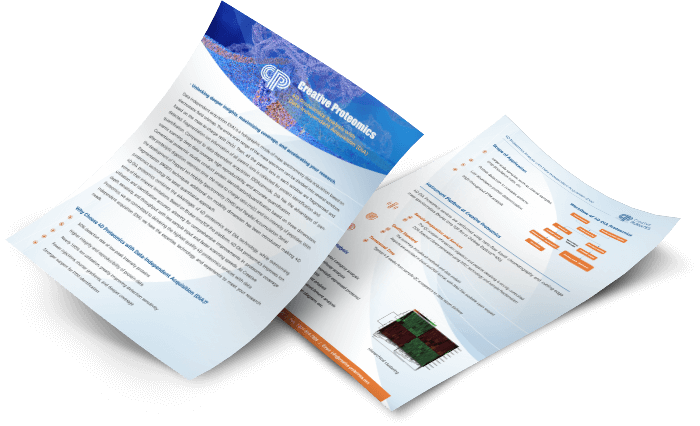Optimization of DIA Mass Spectrometry
Mass spectrometry (MS) enables specific and accurate quantification of proteins with high throughput and sensitivity. Maximizing the potential of MS requires optimization of data acquisition parameters and effective quality control of large data sets. Creative Proteomics is an industry leader in proteomics research, and to achieve these goals for Data Independent Acquisition (DIA), we continue to provide comprehensive and effective solutions for the development of optimal data-driven optimization of MS methods through DIA Mass Spectrometry Optimization, based on our advanced mass spectrometry technology and dedicated research team.
Optimization Methods of DIA Mass Spectrometry
- Peptide Fragmentation and Isolation Windows. One of the fundamental optimization parameters in DIA mass spectrometry is the choice of peptide fragmentation and isolation windows. These windows define the mass range over which precursor ions are fragmented and then subjected to mass analysis. Careful selection of these windows can greatly influence the specificity and sensitivity of the analysis. Optimizing the width and overlap of these windows is crucial for maximizing the number of identified peptides while minimizing interference.
- Collision Energy. The collision energy applied during the fragmentation of precursor ions also plays a critical role in DIA optimization. It must be carefully adjusted to ensure efficient fragmentation without excessive signal loss or noise. Achieving the best outcomes requires fine-tuning the collision energy for various peptide classes or charge states.
- Fragmentation Methods. Different fragmentation techniques, including as electron-transfer dissociation (ETD), electron-capture dissociation (ECD), and higher-energy collision dissociation (HCD), can be used to perform DIA. The fragmentation technique selected should be based on the particular objectives of the study; HCD is a common option because to its adaptability and DIA compatibility.
Technical Advantages of DIA Mass Spectrometry
- Complete Coverage of the Proteome. The capacity of DIA mass spectrometry to give thorough proteome coverage is a notable advantage. DIA analyzes all ions within predetermined windows, in contrast to Data-Dependent Acquisition (DDA) approaches that only choose the strongest precursor ions for fragmentation. As a result, a notably higher number of peptides, including low-abundance and less intense species, are detected.
- Enhanced Quantification. DIA is also very good in quantitative proteomics. DIA offers accurate and repeatable quantitation over a wide dynamic range by methodically sampling a broad mass range. This is very helpful for finding biomarkers and conducting comparative investigations.
- Repeatability. Because of its remarkable reproducibility, DIA is a great option for large-scale experiments and longitudinal investigations. Results may be reliably repeated across several runs thanks to the objective and methodical DIA data collection process, which boosts data confidence.
Technical Process of DIA Mass Spectrometry
The procedure of DIA mass spectrometry is methodical and data-driven.
- Selection of Precursor Ions. Precursor ions are chosen by the device within predetermined isolation windows.
- Breaking apart. A library of fragment ions is created through the fragmentation of precursor ions.
- Acquisition of SWATH. Fragment ions are systematically collected across predefined SWATH windows.
- Data Analysis. DIA data is processed through sophisticated bioinformatics tools to identify and quantify peptides.
- Quantitative Analysis. DIA enables accurate quantification of peptides, facilitating comparative proteomic studies.
Why Choose Us?

Creative Proteomics is dedicated to the field of proteomics research and provides comprehensive and reliable services for protein analysis. If you are interested in us, please feel free to contact us.
* For Research Use Only. Not for use in the treatment or diagnosis of disease.



 4D Proteomics with Data-Independent Acquisition (DIA)
4D Proteomics with Data-Independent Acquisition (DIA)